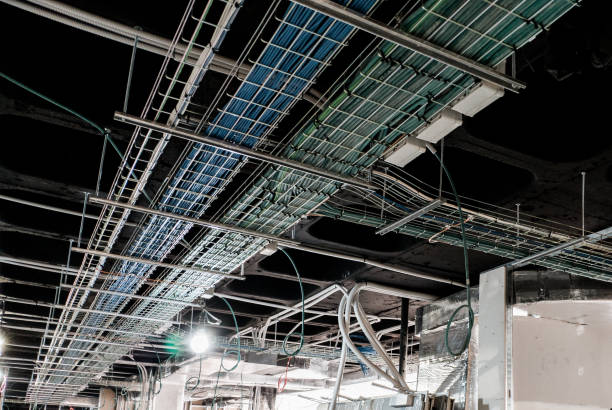
6 Cable Tray Mistakes To Avoid
Every job has its share of potential pitfalls, and the cable tray installation process is no different. Although there are many factors that contribute to a successful installation, there are also several common mistakes that can cause problems down the road. In this article, we’ll discuss four of the most common mistakes made during cable tray installations – so that you can avoid them on your next project!

1. Not properly supporting the cable tray
One of the most common mistakes made when installing a cable tray is not properly supporting it. The tray must be properly supported in order to prevent it from sagging or collapsing, which can damage the cables and pose a safety hazard. Improperly supported cable trays can also lead to problems with vibration and noise.
2. Overloading the cable tray
One of the most common mistakes made when it comes to cable trays is overloading them. When a cable tray is overloaded, it can cause the cables to sag, which can lead to damage. It can also cause the cable tray to become unstable and topple over, which can pose a serious safety hazard.
3. Not securing the cable tray
One of the most common mistakes made when installing a cable tray is not securing it properly. This can be a big problem, especially if the cable tray is located in an area where there is a lot of foot traffic or vibration. If the cable tray is not secured properly, it can become loose and fall, which could damage the cables or even cause injuries.
4. Not following the NEC code when installing a cable tray
If you’re installing a cable tray, it’s important to follow the National Electrical Code (NEC). The NEC provides guidance on the installation of electrical systems, including cable trays. Not following the NEC can result in problems with your installation, including fire hazards and electrical shocks.
5. Failure to properly earth the cable tray
One of the most common mistakes made when installing a cable tray is failing to properly earth the tray. This can create a serious safety hazard as well as cause damage to equipment. Always make sure the tray is properly earthed before beginning any work on it.
6. Not using the correct type of material for the environment
One of the most common mistakes made when selecting a cable tray is not using the correct type of material for the environment. This mistake can lead to serious consequences, such as corrosion and electrical failures.
There are many different types of materials available for cable trays, including aluminium, stainless steel, and galvanized steel. Each material has its own advantages and disadvantages, so it’s important to select the material that is best suited for the environment in which it will be used.
In general, aluminium is best suited for indoor use, while stainless steel or galvanized steel are better choices for outdoor use. However, there are exceptions to this rule, so it’s always best to consult with an expert before making a final decision.
Conclusion
Cable tray mistakes can be costly, and even dangerous. By following the tips in this article, you can avoid making common mistakes when installing or using cable trays. With proper installation and maintenance, cable trays can provide a safe and effective way to organize and protect your cables.

0 comments
Write a comment